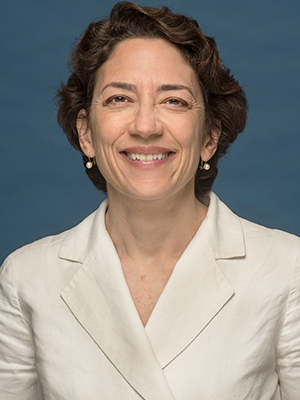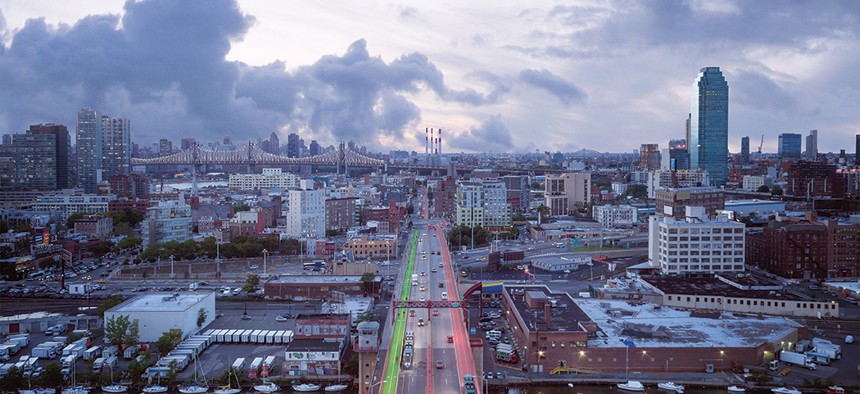The state Legislature didn’t reauthorize New York City’s speed cameras this year, but the city was able to turn them back on after some deft legislative maneuvering. New York City Department of Transportation Commissioner Polly Trottenberg “couldn’t be happier” about it, since it helps with her department’s signature Vision Zero initiative of reducing traffic deaths. Trottenberg said the city is on the right path, reducing deaths while bucking the national trend of increased fatalities.
But Trottenberg’s job isn’t just about cars – it’s about giving people choices for “safe and efficient and affordable modes of transportation,” even if that means fighting back against the city’s “car culture.” This interview has been edited for length and clarity.
New York City just turned its speed cameras back on, by passing authorization from the state Legislature. Are you expecting a lawsuit or will it go unchallenged?
I can’t predict – I don’t want to predict that. It’s New York, and people sue about things, but we’ll see. I think we have really tried to – and I’m proud of this – to run the proof that it’s data-driven and fair. We’ve tried to avoid any “gotcha.” We’ve tried to put cameras in places where the crash data tells us it makes sense to put them. And I’m hoping the people will view the continuation of the program as what we believe it is – something that’s really been helping to save lives on the streets of New York, and not just a revenue raiser for the city.

I want to be careful about that, because I’ve been authorized to look at what the data tells me I can do. So I want to make sure that anything I’m doing is really grounded in data. Part of trying to create a program that can survive politically. One that feels fair, that feels like it’s appropriately targeted, but it’s getting at the most dangerous behaviors. But we’re going to be taking a look at that issue.
The city just announced an updated route and expected cost for the Brooklyn-Queens Connector streetcar. Couldn’t buses do the same route for a lot cheaper?
I think we’ve taken a long, hard look at it. Buses and streetcars bring very different capacities and strengths to the table. We have seen tremendous economic and population growth along the Brooklyn and Queens waterfront. We haven’t made major new transportation investments, particularly in that north-south spine. A streetcar has higher carrying capacity, and I think more ability to bring more development and economic transformation along the route. I’m really hoping that people will see this is going to be a wise investment.
Is it about the external benefits, such as encouraging investment and access to different areas, even though the BQX or ferries may be more expensive per rider than subways or buses?
I’m not entirely persuaded – if you look at the different operating costs per mode and how much they’re subsidized, in the New York region, the highest-subsidized form of transportation is probably the commuter rails, then the express buses, then regular buses and subways. I think streetcars fall closer to the bus/subway end of the equation. And all modes of transportation are subsidized.
Gov. Andrew Cuomo often makes the point that New York City owns the subway and is therefore responsible for it. You’re the person best equipped to fact check the governor. Does he have a point?
I may not be your best person! I’m just a DOT commissioner. It’s not usually my job to go toe-to-toe with the governor of New York. Everyone agrees we support New York City Transit President Andy Byford’s new Fast Forward Plan to modernize the subway system, and it has a lot of great ideas and it’s going to take some real solutions up in Albany. There’s been a lot of debate about congestion pricing, a millionaires tax, about other things we need to put on the table. What the mayor has always said, he’s ready to be part of that political dialogue, and that’s how we’re going to tackle the very urgent needs that New York City Transit has.
Is congestion pricing your top priority in Albany, going into next session?
I certainly think a lot of people would agree that it is a top priority to find sustainable revenue for the MTA. Particularly to make sure Andy Byford’s Fast Forward Plan can really be undertaken in earnest. As to what the political solution is going to be, that’s above my paygrade. I can’t prognosticate. These are challenging political questions: congestion pricing, millionaires tax, value capture. I think Cynthia Nixon in her campaign has talked about a carbon tax. There’s a whole bunch of ideas on the table, and that’s really going to be for our elected officials to come together on. I do sense that people all across the political spectrum, in the Senate and the Assembly and here in the city, feel this is an urgent challenge we need to address.


